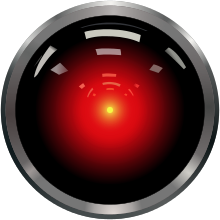动来动去能帮助注意缺陷多动障碍孩子思考么?[翻译]
![动来动去能帮助注意缺陷多动障碍孩子思考么?[翻译]](/content/images/size/w2000/2022/08/tapping_foot_1170.jpg)
在2018年的最后一天发完本文,算是掐点儿完成了包爸给自己设立的平均每月四篇文章的目标,全年48篇列表在此,感谢大家的支持!明年包爸会继续努力,实现(平均)每周一更的小目标。
今天的文章翻译自2015年发布在futurity.org网站上的“Can fidgeting help teens with ADHD think?”一文,作者为Phyllis Brown。本来包爸是逐字翻译,以准确为首要原则,打算给有ADHD(注意缺陷/多动障碍,国内一般称为多动症)孩子的家庭做个参考。但包妈看了初稿后大摇其头,说如果真想对有这个需求的家长们有帮助,就得把大长句子改短,一些不必要的术语去掉。想想包子妈每天门诊都要言简意赅(wēi yán sǒng tīng)地向就诊者交代病情,绝对是行家里手。于是老老实实遵从医嘱,重新改了一版如下:
译文
患有注意缺陷多动障碍(ADHD)的孩子会一刻不停地动来动去,在旁人看来是种分心的表现,但这种行为也许能帮助他们提高认知表现。
一项新研究以患有ADHD的青少年及学龄儿童为对象,关注于他们动作的频度和密度,让他们做需要集中注意力才能完成的任务。在研究中发现:那些更“多动”的孩子反而完成得更好。
研究报告作者称,在ADHD研究中,这种评估多动和完成任务能力之间关系的方向是首次。
多动有益
加利福尼亚大学戴维斯分校的精神病学教授、ADHD项目组主管Julie Schweitzer表示:“研究发现,在完成认知型任务的过程中,试验对象的身体活动是一件好事。”
“在孩子们做事,特别是从事有挑战性的任务时,家长和老师们不应让他们保持不动。我们在ADHD患者身上看到的多动症状,有时实际上会带来好处。也许这些活动提升了他们的(专注力)觉醒水平,从而带来更好的专注度。”
研究者们招募了26名确诊为ADHD的儿童,还有18名正常发育的儿童做为对照组。这些孩子的年龄在10至17岁之间,研究地点在加州萨克拉门托市的MIND研究所内。研究报告发表于儿童神经心理学刊物上。
在研究中,这些孩子要完成一些需要专心对待、避免分心才能做好的任务(Eriksen侧翼任务)。与此同时,他们的身体活动会被脚踝上的装置记录下来。
让他们动
在任务中,孩子会看到一排箭头,需要将注意力集中在中间那个箭头的方向上。有时,中间箭头的指向与侧翼箭头指向一致,有时则正相反。箭头指向相反的情况会让孩子们更容易出错。
患有ADHD儿童的准确度会随着他们身体活动的增加而提高,换句话说,更“多动”与判断正确的关联度,比和犯错误的关联度更高。
研究者表示:“ADHD儿童的准确性会因更多的身体活动得到提升,或者说,当ADHD儿童运用更多认知能力时,会进行更多的身体活动。”
研究报告的第一作者,ADHD研究协调员Arthur Hartanto说:“也许老师们不应该因为孩子们乱动而惩罚他们,只要没有打搅班上的其他孩子,就应当允许他们动来动去。老师们应寻找一些更好的方式,让他们动,因为这可以帮助他们思考。”
本研究由国家心理卫生研究所,加利福尼亚大学戴维斯分校MIND研究所探索基金;MIND研究所知识与发展残疾人研究中心基金提供资金。
消息来源:加州大学戴维斯分校
报告摘要 Study DOI: 10.1080/09297049.2015.1044511
原文
The constant movement of young people with attention-deficit/hyperactivity disorder (ADHD) may seem distracting to others—but all that motion may actually improve their cognitive performance.
A new study of pre-teens and teenagers with ADHD looked at how movement—its intensity and frequency—correlated with accuracy on cognitively demanding tasks requiring good attention. Participants who moved more intensely exhibited substantially better cognitive performance.
The research is the first to assess the relationship between activity and task performance on a trial-by-trial basis in ADHD, the authors say.
Hyperactivity benefits
“It turns out that physical movement during cognitive tasks may be a good thing for them,” says Julie Schweitzer, professor of psychiatry and director of the ADHD Program at University of California, Davis.
“Parents and teachers shouldn’t try to keep them still. Let them move while they are doing their work or other challenging cognitive tasks. It may be that the hyperactivity we see in ADHD may actually be beneficial at times. Perhaps the movement increases their arousal level, which leads to better attention.”
For the study, published online in the journal Child Neuropsychology, researchers recruited 26 children with validated ADHD diagnoses and 18 who were developing typically and served as controls. The research was conducted at the MIND Institute in Sacramento, California. Participants were between the ages of 10 and 17 years when the study took place.
The participants’ movements were measured by affixing a device to their ankles that measured their level of activity while completing a “flanker test” that requires good attention and the ability to inhibit paying attention to distractions.
Let them fidget
In the test, the child is asked to focus on the direction in which the middle arrow in a series of arrows is pointing, limiting their attention to other arrows on either side. On some of the trials the middle arrow is pointing in the same direction as the flankers; in others it is pointing in the opposite direction. Arrows pointing in the opposite direction cause more errors in performance.
The accuracy of the participants with ADHD was significantly improved when they were moving. In other words, correct answers were associated with more motion than incorrect answers.
[related]
“This finding suggests that accuracy in ADHD may be enhanced by more intense activity or that when a child with ADHD is using more cognitive resources they are more likely to be engaging in physical activity.” the researchers write.
“Maybe teachers shouldn’t punish kids for movement, and should allow them to fidget as long as it doesn’t disturb the rest of the class,” says lead author Arthur Hartanto, a study coordinator with the ADHD. “Instead, they should seek activities that are not disruptive that allow their students with ADHD to use movement, because it assists them with thinking.”
The National Institute of Mental Health, a UC Davis MIND Institute Pilot Grant; and a MIND Institute Intellectual and Developmental Disabilities Research Center grant funded the work.
Source: UC Davis
Original Study DOI: 10.1080/09297049.2015.1044511

